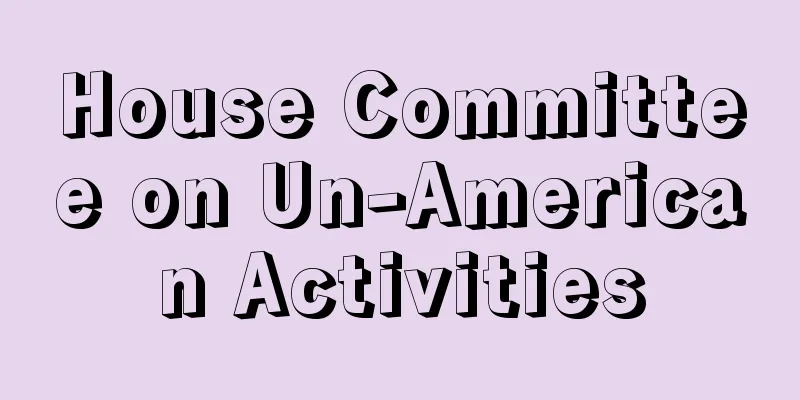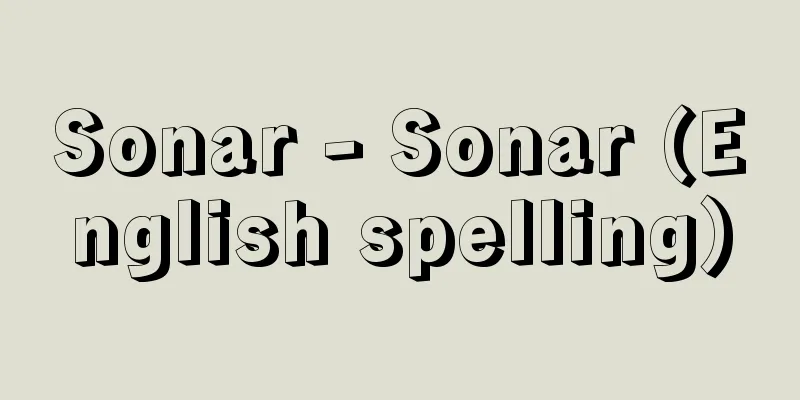Group - shuudan (English spelling) group

|
In a broad sense, a group can refer to any gathering or flock of humans or animals, but in psychology, a group is a collection of two or more people that has the following characteristics: 1) continuous interaction between the people (members), 2) the formation of norms, 3) the existence of a common goal among the members and a cooperative relationship to achieve that goal, 4) the integration of the whole with differentiation of status and roles, 5) awareness of the boundary with the outside world, and 6) the existence of a "we-feeling" and attachment to the group. It is not necessary for a group to have all of these characteristics perfectly. The degree to which these characteristics are possessed varies from group to group, depending on the time that has passed since the group was formed and the differences in group goals. Also, a group that is simply a gathering of people, such as a crowd waiting for the light at an intersection, is called an aggregation and is distinguished from a group. When examining groups psychologically, it is important to be aware that we should not assume that the group itself has a mind. The debate over "what is a group" dates back to the philosophical treatises of ancient Greece. Among them, Plato's panpsychism, which states that "mind and consciousness are omnipresent and exist in everything," has had a great influence up to the present day. When psychology of groups and society began in the late 19th century and early 20th century, panpsychism was linked to the group organism theory, which states that "groups also have minds." Many researchers who assumed a mentality in groups can be found among the leading figures in the development of psychology at the time, such as Durkheim, E., who proposed the concept of representation collectives, and Wundt, W., who conducted research on Volkerpsychologie for many years. A representative example of this is McDougal, W. (1922), who proposed the concept of group mind. He believed that a group mind exists in groups that transcends individuals and persists forever. Based on this idea, he argued in "Group Mind" that within a group, individuals act according to the will of the group rather than their own will, and that even if individuals (members) are replaced, the mind of the group is passed on and inherited by the next generation. In response to the idea of group mind, which was becoming mainstream, Allport, FH, criticized the idea that it was unscientific to explain the behavior and phenomena observed in groups and societies by the minds held by groups and societies. In his article "The group fallacy in relation to social science" (1924) published in the American Journal of Sociology, he stated that "in all sciences, explanations (of the causes of occurrence of a certain phenomenon) are possible only by approaching scientific concepts to a more elementary (micro) level, and the essence of the error lies in using groups, not individuals, as a proxy for the principle of explanation" (the text in parentheses is added by the author). This criticism is called a criticism of the group fallacy. From the perspective of modern science, his argument was too biased toward reductionism, but for psychology at the time, which had developed under the slogan of the science of the mind, his criticism that it was unscientific had a huge impact. As a result, psychological research on groups took a major step back, even if only temporarily, until the rise of group dynamics by Lewin, K. Today, with the development of complex systems science, attention is being paid to the existence of collective emergent properties of groups that cannot be reduced to individual characteristics, such as organizational culture and teamwork. However, it remains inappropriate to assume the existence of a mind in a group. The mind resides in an individual. The collective properties of a group that are produced by the interaction of multiple minded individuals cannot be called a mind, even if they have psychological characteristics. Premack, D. and Woodruff, G. (1978) point out that humans have a theory of mind, which naively believes and assumes that other people and objects "have minds." Assuming the existence of a mind in a group is thought to be a cognitive pattern that humans are prone to fall into, and we should be very careful. [Types of groups] In studying groups, a variety of criteria have been presented for classifying groups. Groups such as family and friend groups, class groups, and workplace groups, which are groups with which people have close daily interactions, are classified based on differences in the goals of the groups. In psychology, highly universal classifications have been considered that focus on the meaning and function of groups for their members. The following are some typical classifications: The first is the classification of in-groups and out-groups. This classification was first proposed by Sumner, WG (1978). His classification is based on the idea of ethnocentrism, which places the group to which one belongs at the center and evaluates all other groups based on one's own group. The in-group can be expressed as "us" and the out-group as "outsiders," or the in-group can be expressed as "we-group" and the out-group as "they-group." In the world of psychology, the importance of this classification was brought to light by the social identity theory proposed by Tajfel, H. and Turner, JC (1986) and a series of empirical studies related to it. They called the psychological act of recognizing oneself as belonging to a certain social category self-categorization, and argued that it is an act of exploring and acquiring a self-concept. According to their theory, when one recognizes oneself as a member of a certain social category, that category becomes one's in-group and the rest become out-groups. Then, one arbitrarily assumes that members of the in-group have characteristics similar to one's own, and evaluates them favorably and favorably, resulting in in-group favoritism. On the other hand, one recognizes members of the out-group as people with characteristics different from one's own, and evaluates them discriminatory and aggressively, resulting in out-group discrimination. The former is sometimes called in-group bias, and the latter is sometimes called out-group bias. Tajfel and others pointed out that while ethnic conflicts and other social conflicts are macro-level phenomena, their origin lies in the micro-level psychological actions of individuals searching for and acquiring their own social identities, and promoted research in social psychology that focuses on micro-macro dynamics. As a result of their research, the classification of in-groups and out-groups has gained an important position in psychological research. The second is the classification of primary groups and secondary groups. Primary groups are groups that are formed by direct face-to-face interactions, such as families and groups of friends, while secondary groups are groups that are formed by indirect contact at a distance, such as communities and societies. Today, when indirect interactions through the Internet are no longer uncommon, the existence of secondary groups is taking on a different meaning for humans than it once did. It has become clear that intimate interpersonal relationships that were previously fostered through face-to-face contact can also be formed in networks with people who have never met in person. Although this is a classic criterion for classifying groups, its importance is being reaffirmed. The third is majority group and minority group. This is a classification of those who make up the majority and those who make up the minority in a society or group. In some cases, it is simply determined by the number of people, but minority groups can also mean those who are inferior in terms of social power. When group dynamics first developed, conformity behavior research, which examined the strength of pressure that majority groups exert on minorities to conform, was the norm. In response to this, Moscovici, S. pointed out the possibility that minorities can change the attitude of the majority by repeating consistent claims, and conducted experiments to confirm the validity of his claim. His findings and research paradigm promoted many subsequent studies. Numerous follow-up tests have made it clear that Moscovici's claim needs to be revised, but the classification of majority and minority groups provides an important framework and psychological insights when examining the process of changing social norms and resolving social conflicts. In addition to these, there is a classification into Gemeinschaft, where the ties between members are based on emotional harmony, and Gesellschaft, where the ties are based on calculation. There are also various classifications of social groups that are formed by grouping members based on demographic attributes such as age, gender, occupation, and religion. There is also a classification that calls groups that are formed formally according to official standards formal groups, and groups that are based on close psychological ties created by interpersonal interaction informal groups. [Group structure] An organization is a group formed for the purpose of achieving a certain goal. Therefore, in order to efficiently achieve the goal, an organized group has a certain structure from the beginning, with the division of labor by horizontal division of labor, and the difference in job ranks and job grades by vertical division of labor. However, the structure designed for efficient goal achievement is not the only group structure. Even in a group that does not have any particular structure at first, such as a group of friends, where members are simply gathered together, various structures, including interpersonal relationships, gradually emerge as the members interact with each other. Structures shown in an organizational chart, such as the division of labor and job grades, are called formal structures, while structures built within a group through the interactions of members are called informal structures. There are various structures built in groups, but the most representative ones are the power structure, the communication structure, and the sociometric structure. A power structure is a structure formed by the relationship between the strength of the power held by each member. Power means the potential ability to exert influence over others. French, JRP and Raven, BH (1959) classify power into five types based on the difference in the base of power: coercive power, reward power, legitimate power, expert power, and referent power. Emerson, RM (1972)'s power dependence theory explains how the relationship between the strength of power is determined. Humans live their lives through social exchange with others. If the exchange relationship with a certain person is important and brings rewards that are highly valuable to oneself, then one is considered to be highly dependent on that person. Dependence on another person means being in a relatively weaker position than the other person in terms of power relations. If the exchange relationship is equally important to both parties, the power relationship will be balanced, but if one party is more dependent on the other, the balance will be broken and the more dependent party will be in a weaker position. Through interaction, group members recognize the power bases held by others and evaluate their own power, thereby building power relationships. This relationship becomes the group's power structure. In organizational groups, it is common for a certain amount of power to be granted in advance according to job title and rank. The higher the position, the more the organization gives the power (authority) to give instructions and orders and make members follow them as a rule. This given power structure is official, while the power structure that members create through interaction is informal. When these two aspects differ, a dual structure of power exists within the organization. A communication structure is constructed to reflect the state of communication exchanged between members. The way members are connected to each other through communication behavior is understood as a network structure. There are models of network structures such as a star-shaped network in which all members are connected to all other members, a wheel-shaped network in which all communication is conducted through a leader and information is concentrated on the leader, and a chain-shaped network in which each person has a specific person they communicate with and is connected in a line. However, actual communication structures are diverse and complex, combining multiple of these. In addition, there are bilateral relationships in which communication is frequent, and in which no communication is exchanged at all. When analyzing the characteristics of a communication structure, indicators of the degree to which communication is concentrated on a certain member (concentration), the extent to which the network is widespread (density), and the degree to which members speak to each other (reciprocity) are used. Sociometric structure is the structure of human relationships based on the likes and dislikes of members, and represents the informal structure of a group. Sociometry is a method for measuring human relationships developed by Moreno, JL. Each member is asked to select multiple people from the group that they like in order, and the relationship between the selection and the selected is illustrated in a sociogram using graph theory. By drawing a sociogram, it is possible to grasp the state of likes and dislikes between members, the extent of each member's emotional relationship, the state of the emotional interpersonal structure of the entire group, the informal leaders selected by many members and the informal status of each member, the existence of subgroups within the group based on likes and dislikes, etc. [Function of groups] Lewin (1951) pointed out that when multiple individuals come together to form a group, the individuals influence each other and create a psychological field in the group. Although the psychological field is created by the members, it also has a variety of effects on the psychology and behavior of the members. As time passes after the formation of a group, the members begin to feel a "we-ness" and develop an emotional sense of solidarity. They also recognize themselves as a member of the group and develop a social identity. This means that the group has the function of providing a social identity to individuals. The group to which one belongs becomes an in-group, and an in-group bias that evaluates it favorably comes into play. Then, they feel attracted to being a member of the group, and their desire to remain a member of the group becomes stronger. The total attraction that members feel in being a member of this group is called group cohesiveness, and it increases their motivation to adopt words, actions, and attitudes appropriate to being a member of the group. This motivation leads to a psychological vector in which members adjust their own attitudes to each other and try to create a harmonious state as a whole. In the early stages of group formation, even if each member has different opinions and judgments, as they continue to interact with each other within the group, a phenomenon is observed in which all opinions converge to one. The group function that causes the attitudes of its members to converge to one is called uniformity pressure. Sherif, M. (1935) conducted an experiment in which subjects observed the automatic movement of a light spot in a dark room and verbally reported the distance that they perceived the light spot to have moved. This confirmed the existence of uniformity pressure and clarified the process by which group norms are generated. Similar to uniformity pressure is the pressure for conformity by the majority. Asch, SE (1951) conducted an experiment using a line length perception task in which he created a situation in which participants other than the subject (so-called sakura) in a group of 6-7 people unanimously indicated a clearly incorrect judgment. As a result, he clarified that even if an opinion is clearly incorrect, if everyone in the group except for the subject unanimously asserts it, more than 60% of the people will conform to it. In this case, it is important that the attitude of everyone other than oneself is consistent, and if there is someone other than oneself who has an attitude different from that of the majority, the degree of conformity will drop sharply. In this way, groups form norms and become united as members feel solidarity and increase cohesion. However, in various aspects of group activities, it is inevitable that some conflicts will arise due to differences in opinions and interests among members. If conflicts are left unchecked, the rift between members will deepen, the group's cohesion will decrease, and it will eventually collapse. To prevent such destructive situations, members may take into consideration the desires and feelings of members and work to adjust and alleviate conflicts within the group. This group maintenance function is a function created by the interactions between members, but attention has been paid in particular to the aspect created by the influence exerted by the group's leader, that is, leadership. In addition to maintaining the group, members may also work to promote the achievement of the group's goals. This is the group's goal achievement function. The functions of maintaining the group and achieving the group's goals are the two basic group functions necessary to realize harmonious and fulfilling group activities. The fact that a prerequisite for excellent leadership is the ability to take steps to promote both of these functions to a high degree can be seen from the numerous two-factor theories that have been proposed, including the Managerial Grid Theory by Blake, RR and Mouton, JS (1964) and the PM Theory by Misumi Juji (1984). While the function of a group has a negative aspect of restricting the autonomous behavior of individuals, it also has a positive aspect of giving individuals a social identity and encouraging cooperation and support. For humans, who have evolved by forming groups, groups are living environments to which they must adapt, and are thought to have played a role in nurturing human sociality and leading to the evolution of the social brain. → Group dynamics → Social power → Group decision-making → Intergroup relations → Group productivity → Conformity [Yamaguchi Hiroyuki] Latest Sources Psychology Encyclopedia Latest Psychology Encyclopedia About Information |
|
広義には人間や動物の集まりや群れをも含めて集団とよぶが,心理学においては,二人以上の人びとによって形成される集合体で,次のような特徴を備えているものを集団とよぶ。すなわち,①それらの人びと(成員)の間で継続的に相互作用が行なわれ,②規範の形成が見られ,③成員に共通の目標とその目標達成のための協力関係が存在し,④地位や役割の分化とともに全体が統合されており,⑤外部との境界が意識され,⑥「われわれ感情」や集団への愛着が存在する,といった諸特徴である。なお,これらすべての特徴を完全に備えている必要はない。集団の形成からの時間的経過や集団目標の違いなどによって,これらの特徴が備わる程度は,集団によって差が見られる。また,交差点で信号待ちをしている群集crowdのような単に人びとが集まっただけの集合体は集合aggregationとよび,集団とは区別される。 集団について心理学的に検討するときに認識しておかなければならないのは,集団自体に心の存在を想定してはならないということである。「集団とは何か」を巡る議論は,古代ギリシアの哲学の論考にさかのぼる。その中で,「精神や意識は遍在し,あらゆるものに存在している」とするプラトンPlatonの汎心論は,現代に至るまで多大な影響を及ぼしてきた。集団や社会に関する心理学が始まった19世紀末から20世紀初め,汎心論は「集団にも心がある」とする集団有機体説と結びついた。集合表象representation collectivesの概念を提示したデュルケムDurkheim,E.や,民族心理学Volkerpsychologieの研究を長年にわたって行なったブントWundt,W.など,集団に心性を想定した研究者は,当時の心理学の発展を牽引した有力者の中にも数多く見いだされる。それらの代表的存在が,集団心group mindを提唱したマクドゥーガルMcDougal,W.(1922)である。彼は,集団には個人を超えて集団心が存在し,永続すると考えた。その考えに基づき,彼は『Group Mind』で,集団の中では,個人は自らの意思というよりも集団の意思で行動するようになり,個人(成員)はたとえ入れ換わっても,集団の心は受け渡され次の世代に継承されていくと論じた。 主流となりつつあった集団心の考え方に対して,オルポートAllport,F.H.は,集団や社会において観察される行動や現象を,集団や社会が保持する心によって説明することは非科学的であると批判した。彼は,『American Journal of Sociology』に発表した論文「The group fallacy in relation to social science」(1924)の中で,「すべての科学では,(ある現象が発生した原因の)説明は,より原初要素的な(ミクロな)レベルへと科学の概念を近づけることによってのみ可能になるのであり,説明の原理として,個人ではなく集団を代理的に用いることに錯誤の本質がある」(カッコ内は筆者による補足)と述べている。彼のこの指摘は集団錯誤group fallacyの批判とよばれる。彼の主張は,現在の科学観からすれば,還元主義に偏りすぎたものではあるが,心の科学を標榜して発展してきた当時の心理学にとって,非科学的であるという指摘は,きわめて大きなインパクトをもって受け入れられた。その結果,集団に関する心理学研究は,レビンLewin,K.によるグループ・ダイナミックスの台頭まで,一時的にせよ大きく後退した。 今日,複雑系科学の発展によって,組織文化やチームワークのように,個人特性に還元することのできない集団の全体的な創発特性の存在が注目されてきている。しかし,集団に心の存在を想定することが不適切であることに変わりはない。心は個人に宿るものである。心をもつ個人が複数集まって相互作用することで生み出される集団の全体的特性は,たとえ心理学的な特性を帯びるものではあっても,心とよべるものではない。プレマックPremack,D.とウッドラフWoodruff,G.(1978)が,人間は,他者やモノが「心をもっている」と素朴に信じ想定する心の理論theory of mindをもっていることを指摘している。集団に心の存在を想定してしまうのは,人間が陥りやすい認知様式であると考えられ,十分に注意すべきである。 【集団の種類】 集団を研究するにあたって,集団を分類する基準は多様に示されてきた。日常的にかかわりの深い家族や友人集団,学級集団や職場集団等の分類は,集団の目標の違いに基づく分類である。心理学では,成員にとって集団のもつ意味や機能に着目した普遍性の高い分類が検討されてきた。代表的な分類には以下のようなものが挙げられる。 一つ目は,内集団in-groupと外集団out-groupの分類である。最初にこの分類を提示したのはサムナーSumner,W.G.(1978)である。彼の分類は,自己の所属する集団を中心におき,それ以外のすべての集団に対して,自集団を基準にした評価を行なうエスノセントリズムethnocentrism(自民族中心主義,自文化中心主義)の考え方を基盤にしている。内集団はウチで外集団はヨソモノ,あるいは,内集団はわれわれ集団we-groupで外集団は彼ら集団they-groupと表現することができる。 心理学の世界で,この分類の重要性を知らしめたのが,タジフェルTajfel,H.とターナーTurner,J.C.(1986)が提示した社会的アイデンティティ理論social identity theoryと,それに関する一連の実証研究である。彼らは,自己をある一つの社会的カテゴリーに属する存在として認識する心理的行為を自己カテゴリー化self-categorizationとよび,自己概念を探索し獲得する行為であると論じた。彼らの理論によれば,自己をある社会的カテゴリーの一員として認知すると,そのカテゴリーが本人にとっての内集団になり,それ以外は外集団になる。そして,内集団の成員を自己に類似した特性をもつ人びとであると勝手に思い込み,好意的にひいき目に評価する内集団ひいきin-group favoritismが生じるようになる。他方,外集団の成員に対しては,自己とは異質な特性をもつ人びとであると認知し,差別的,攻撃的に評価する外集団差別out-group discriminationが生じるようになる。前者を内集団バイアスin-group bias,後者を外集団バイアスout-group biasとよぶこともある。 タジフェルらの指摘は,民族紛争をはじめとする各種の社会的紛争はマクロレベルの現象であるが,その発端は,個人が自らの社会的アイデンティティを模索し獲得する心理というミクロレベルの行為にあることを明らかにして,社会心理学におけるミクロ-マクロ・ダイナミズムに着目した研究を促進した。彼らの研究によって,内集団と外集団の分類は,心理学研究の中で重要な位置づけのものとなっている。 二つ目は,1次集団primary groupと2次集団secondary groupの分類である。1次集団とは,家族や友人集団のように,直接的な対面的相互作用によって成り立っている集団であり,2次集団とはコミュニティや社会のように,距離を隔てた間接的な接触によって成り立っている集団である。インターネットを介して間接的な接触による相互作用が珍しいものではなくなってきた今日にあって,人間にとって2次集団の存在は,かつてとは異なる意味をもちつつある。直接的に対面することで醸成されるとされてきた親密な対人関係は,一度も対面したことのない人物たちとのネットワークの中でも成立しうることがわかってきた。古典的な集団の分類基準ではあるが,その重要性が再認識されている。 三つ目は,多数者集団majority groupと少数者集団minority groupである。これは一つの社会や集合の中で,多数派を占める者たちと少数派の者たちとを分類するものである。単に人数の多寡によって決まる場合もあるが,少数者集団は,社会勢力的に劣る者たちを意味することもある。グループ・ダイナミックスが発展した当初は,多数者集団が少数者に同調を強いる圧力の強さについて検討した同調行動研究が大勢を占めていた。これに対して,モスコビッチMoscovici,S.は,少数者が一貫した主張を繰り返すことで多数者の態度を転換させる可能性を指摘して,実験を行ない,その主張の妥当性を確認した。彼の指摘と研究パラダイムは,これに続く多くの研究を促進した。数多くの追試によって,モスコビッチの主張は,修正を加えるべきことが明らかになっているが,社会規範の変革プロセスを検討したり,社会的紛争の解決を検討したりする際に,多数者集団と少数者集団の分類は,重要な枠組みと心理学的知見をもたらしている。 これらのほかにも,成員同士の結びつきが情緒的融和に基づくゲマインシャフトGemeinschaftと打算に基づくゲゼルシャフトGesellschaftに二分する分類がある。また,年齢や性別,職業や信仰する宗教などの人口統計学的属性を基準にグルーピングしてできあがる社会集団には多様な分類がある。さらに,公的基準によって形式的に形成される社会集団のような集団をフォーマル集団formal groupとよび,対人的相互作用によって生まれる密接な心理的結びつきに基づく集団をインフォーマル集団informal groupとよぶ分類もある。 【集団の構造】 組織organizationは,ある目標を達成する目的で形成された集団である。したがって,組織集団organized groupは,その目標の達成を効率的に成し遂げるために,水平の分業による職務の役割分担や,垂直の分業による職位や職階の違いを設けて,初めから一定の構造を備えている。しかし,効率的な目標達成をめどとして設計された構造だけが集団の構造ではない。友人集団のように,初めは単に成員が集まっただけでとくになんの構造も存在しなかった集団であっても,成員たちが相互作用を繰り返すうちに,しだいに対人関係をはじめとするさまざまな構造が生まれてくる。職務分担や職階のように組織図に表わされる構造はフォーマル構造formal structureとよばれるのに対して,成員たちの相互作用によって集団の中に構築される構造はインフォーマル構造informal structureとよばれる。集団に構築される構造には多様なものがあるが,代表的なものとしては,勢力構造power structure,コミュニケーション構造communication structure,ソシオメトリック構造sociometric structureが挙げられる。 勢力構造は,成員各自が保持する勢力の強弱の関係性によって形成される構造である。勢力powerとは他者に対して影響力を行使しうる潜在的な能力を意味する。フレンチFrench,J.R.P.とレイブンRaven,B.H.(1959)は,勢力の基盤の違いに基づいて,強制勢力coercive power,報酬勢力reward power,正当勢力legitimate power,専門勢力expert power,準拠勢力(参照勢力)referent powerの五つに分類している。どのように勢力の強弱関係が規定されるのかについては,エマソンEmerson,R.M.(1972)の勢力依存理論power dependence theoryによって説明される。人間は他者との社会的交換によって生活を営んでいる。ある相手との交換関係が自分にとって価値の高い報酬をもたらす重要なものであれば,その相手への依存度は高いと考えられる。相手に依存するということは,勢力関係としては相対的に相手よりも弱い立場を意味する。お互いにとってその交換関係が同じように重要であれば勢力関係は均衡するが,どちらかの依存度が相手よりも高い場合には均衡は崩れ,依存度の高い方は相手よりも勢力的に弱い立場におかれることになる。集団の成員たちは相互作用を通して,他者の保持する勢力の基盤を認知し合い,各自の勢力を評価し合うことで,勢力関係を構築していく。この関係性が,集団の勢力構造となる。なお,組織集団においては,職位や職階に応じて一定の勢力があらかじめ付与されることが一般的である。職位の上位者になるほど,指示や命令を出して,成員をそれに従わせる勢力(権力)を組織がルールとして与えるのである。この所与の勢力構造は公式なものであるのに対して,成員たちが相互作用を通して作り上げる勢力構造は非公式なものである。この二つが異なる様相を示すとき,組織内に勢力の二重構造が存在することになる。 コミュニケーション構造は,成員間で交わされるコミュニケーションの様相を反映して構築されるものである。成員同士がコミュニケーション行動でつながる様子はネットワーク構造として把握される。ネットワークの構造には,全員が互いに他の成員全員とつながる星型のネットワークや,リーダーを中心にすべてのコミュニケーションがリーダーを経由して行なわれ,情報がリーダーに集中する車輪型,各自コミュニケーションを取る相手が決まっていて一列につながるチェーン型などのモデルがあるが,実際のコミュニケーション構造はこれらを複数合成した多様で複雑なものとなる。また,頻繁にコミュニケーションが交わされる二者関係もあれば,まったくコミュニケーションが交わされないものもあったりする。コミュニケーション構造の特性を分析する際には,ある成員にコミュニケーションが集中している程度(集中度)や,ネットワークの広がりの程度(密度),互いに発話している程度(相互性)の指標が用いられる。 ソシオメトリック構造は,成員の好悪感情に基づく人間関係の構造であり,集団のインフォーマル構造を表わすものである。ソシオメトリーsociometryは,モレノMoreno,J.L.が開発した人間関係の測定技法であり,各成員に,集団の中から好感をもつ相手を,順番をつけて複数名選択させ,選択と被選択の結びつきの関係を,グラフ理論を活用したソシオグラムで図示する。ソシオグラムを描くことで,成員間の好悪関係の様相,各成員のもつ情緒的関係の広がりの様相,集団全体の情緒的な対人関係構造の様相,多くの成員から選択されているインフォーマル・リーダーと各成員のインフォーマル地位,好悪感情に基づく集団内の下位集団の存在等を把握することができる。 【集団の機能】 レビン(1951)は,複数の個人が集まって集団が形成されると,個人が互いに影響を及ぼし合って,集団には心理学的場psychological fieldができると指摘した。心理学的場は成員たちが作り上げるものでありながら,同時に成員の心理と行動に多様な影響を及ぼす。集団を形成してから時間が経過するにつれて,成員たちは「われわれ意識we-ness」を感じるようになり,情緒的な連帯感を抱くようになる。また,自己をその集団の一員として認知して社会的アイデンティティをもつようになる。このことは,集団が個人に社会的アイデンティティをもたらす機能をもっていることを意味する。自己の所属する集団は内集団となり,好意的に評価する内集団バイアスが働く。そして,集団の一員であることに魅力を感じ,集団の一員でありつづけたいと願う気持ちが強くなる。この集団の一員であることに成員が感じる魅力の総体は集団凝集性group cohesivenessとよばれ,集団の一員としてふさわしい言動と態度を取ろうとする動機づけを高める。この動機づけは,成員たちが互いに自己の態度を調整して,全体として調和の取れた状態を作り出そうとする心理的ベクトルにつながる。 集団の形成初期においては,成員が個々に異なる意見や判断をもっていても,集団内で相互作用を繰り返すうちに,全員の意見が一つに収斂していく現象が見られる。成員の態度を一つに収斂させる集団の機能は斉一性の圧力とよばれる。シェリフSherif,M.(1935)は,暗室の中の自動光点運動を被験者たちに観察させ,各自が知覚した光点の移動距離を口頭で報告させる実験を行なって,斉一性の圧力の存在を確認するとともに,集団規範が生成されるプロセスを明らかにした。 斉一性の圧力と類似するものとして,多数者による同調conformityの圧力が挙げられる。アッシュAsch,S.E.(1951)は,線分の長さの知覚課題を用いて,6~7人の集団の中で,被験者以外の実験参加者(いわゆるサクラ)が明らかに間違った判断を一致して示す状況を作り出して実験を行なった。その結果,たとえ明らかに間違った意見であっても,集団の中で,自分以外の全員が一致して主張するときには,6割以上の人びとがそれに同調することを明らかにした。このとき,自分以外の全員の態度が一致していることが重要で,自分以外にも多数者の態度と異なる態度を取る者がいる場合には,同調する程度は一気に低くなる。 このように集団は,成員たちが連帯感をもち,凝集性を高めながら,規範を形成し,結束していく。しかし,集団活動のさまざまな局面において,成員間の意見や利害が対立して,一定の葛藤が発生することは避けられない。発生した葛藤を放置すれば,成員間の亀裂は深まり,集団の凝集性は低下し,いずれ崩壊を迎えることになってしまう。そうした破壊的事態を迎えることがないように,成員の欲求や感情を配慮し,集団内の対立の調整緩和を図る働きかけが成員間でなされることがある。この集団の維持機能は,成員間の相互作用が生み出す機能であるが,とりわけ集団のリーダーが発揮する影響力,すなわちリーダーシップleadershipによって生み出される側面に注目が集まってきた。また,集団の維持に加えて,集団の目標達成を促進するような働きかけも成員間でなされることもある。これは,集団の目標達成機能である。集団の維持機能と目標達成機能の二つは,円満で充実した集団活動を実現するために必要な集団機能の基本である。この二つの機能をいずれも高度に促進する働きかけを行なうことが,優れたリーダーシップの条件であることは,ブレークBlake,R.R.とムートンMouton,J.S.(1964)のマネジリアル・グリッド理論や三隅二不二(1984)のPM理論をはじめとして,多数の二要因理論が提示されていることからもわかる。 集団の機能は,個人の自律的な言動を制約する方向で働くネガティブな側面もある一方,個人に社会的アイデンティティを与えたり,協力し支え合ったりするポジティブな側面もある。集団を形成して進化してきた人間にとって,集団は適応すべき生活環境であり,人間の社会性を育み,社会脳の進化をもたらす機能を果たしてきたと考えられる。 →グループ・ダイナミックス →社会的勢力 →集団意思決定 →集団間関係 →集団生産性 →同調 〔山口 裕幸〕 出典 最新 心理学事典最新 心理学事典について 情報 |
>>: Housing problem - housing problem English
Recommend
Fireproof stone
The name of a pale gray to white glassy rhyolite ...
Negev (English spelling)
The southern region of Israel that stretches from ...
Fixation - Teichaku
In silver halide photography, this is the process...
Yayoi culture
Overview Definition This was the first culture in...
Denjiro Okochi - Ookochi Denjiro
A film actor. His real name was Obe Masuo. He was...
Aetobatus narinari (English spelling) Aetobatusnarinari
...They give birth to 5-8 young in the summer. Th...
Mount Giboshu
...The main part of the new Daisen is Mt. Misen, ...
Viktor Sergeevich Rozov
Russian playwright. He was seriously wounded on t...
Small writing - Kogaki
A special type of Noh performance. It is so named...
binominal nomenclature
…The classification of living things was establis...
Thalictrum filamentosum (English spelling) Thalictrum filamentosum
…[Michio Tamura]. … *Some of the terminology that...
Cuvier pipe - Cuvier pipe
⇒ Cuvier organ Source: About Shogakukan Digital Da...
Karakusa Oose - Karakusa Oose
...It is found in coastal or shallow water areas ...
Eight Banners of the Han Dynasty
One of the Eight Banners (military system) of the ...
Meken
…Here, I would like to explore the cultural and s...






![Obanazawa [city] - Obanazawa](/upload/images/67cb2159b4fcd.webp)


